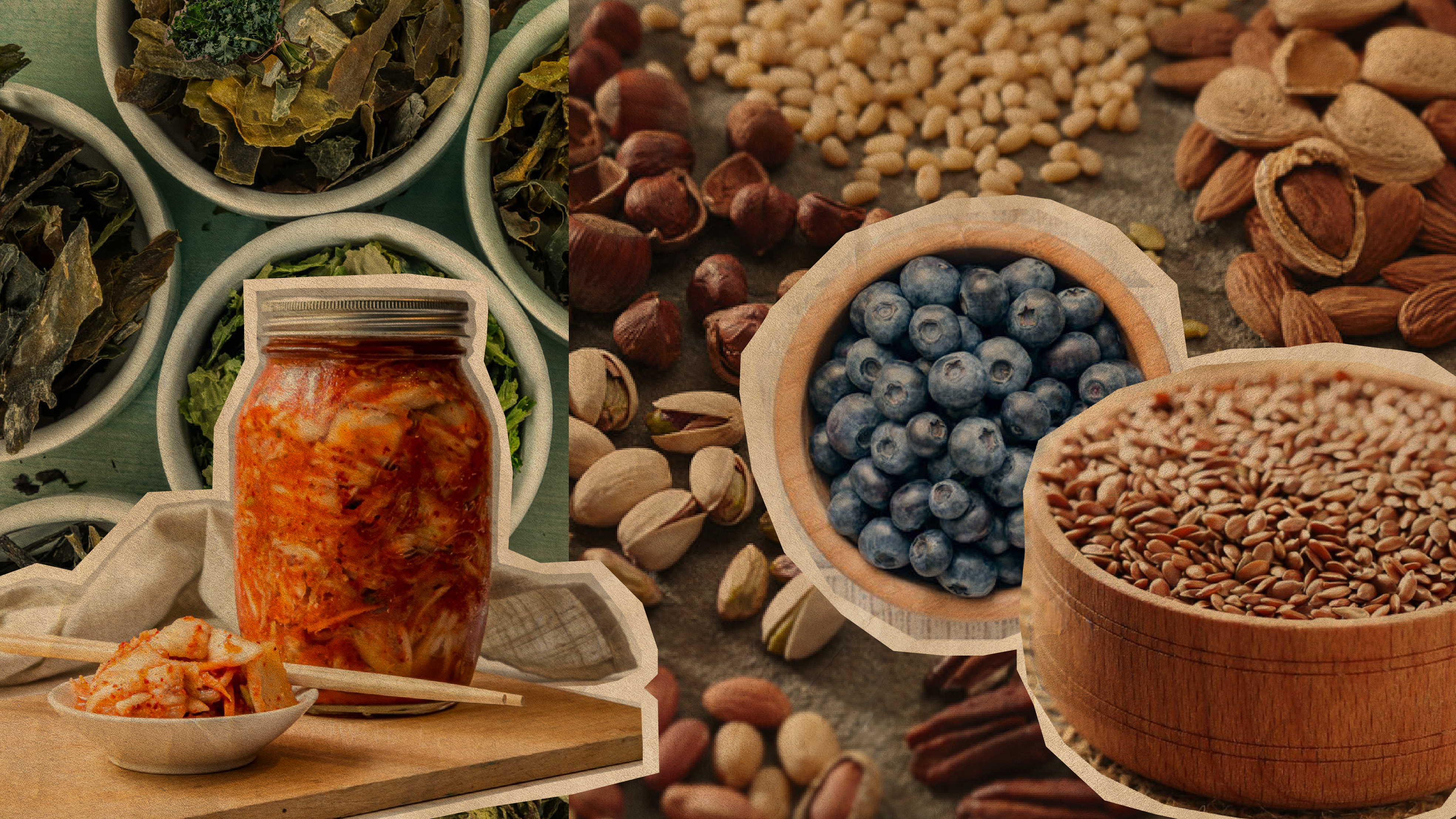the term "superfood" is a relatively new way of describing foods that offer maximum nutrition with minimum caloric content. at this time, there are no standard criteria or legal definitions by which a food can be classified as a superfood.
any food that is particularly nutrient-dense and contains compounds-such as vitamins, minerals, antioxidants, or fiber-that may help reduce the risk of disease or provide exceptional health benefits can be considered a superfood.
WATERCRESS
watercress is a naturally low-calorie, low-fat food that is packed with a variety of micronutrients and phytonutrients that have been linked to important health benefits. phenethyl isothiocyanate (PEITC) is found as gluconasturtiin in many cruciferous vegetables and has been shown to have remarkable anti-cancer properties.

FLAXSEED
flaxseed is one of the richest sources of alpha-linolenic acids, or A.L.A.s, a type of omega-3 fatty acid found in plants that is known as a "heart healthy fat". the seeds are also filled with soluble fiber, which absorbs water from your body and becomes a gel in your intestines. this slows down digestion and helps your body absorb nutrients from what you eat gradually. foods that are high in fiber can help stabilize blood sugar levels and keep you feeling fuller for longer. the seeds also contain one of the highest natural concentrations of lignan, a fiber-like compound found in plants which can reduce inflammatory response.

KALE
kale is high in calcium, which helps bones function properly; iron, which helps oxygen transport; potassium, which helps maintain blood pressure; and vitamins A, C, E, and K, which help maintain eye health and increase iron absorption. Its protein content is also high, at about 10%. It also has antioxidant properties, not only due to vitamins A and C, but also due to the presence of lutein, which has been linked to the prevention of several cardiovascular diseases and diabetes, according to nutritionists.

BLUEBERRYS
blueberries are rich in antioxidants, particularly anthocyanins, which give them their vibrant color. these antioxidants help protect the body from oxidative stress and inflammation, reducing the risk of chronic diseases such as heart disease and cancer. studies have shown that the compounds in blueberries can improve cognitive function and delay age-related decline in brain function. regular consumption of blueberries may help improve memory, concentration, and overall brain health. they are also known to promote heart health by lowering blood pressure, cholesterol, and improving overall vascular function.

QUINOA
quinoa is packed with essential nutrients, making it a superfood in its own right. It is a complete protein, containing all nine essential amino acids that the body cannot make on its own. In addition, quinoa is rich in fiber, magnesium, iron, and antioxidants, contributing to overall health and well-being.
for people with gluten intolerance or celiac disease, quinoa is a great alternative to wheat-based grains. It is naturally gluten-free, making it a safe and nutritious option for those with gluten sensitivities.
it is known for promoting heart health because it is high in fiber and magnesium. fibers help reduce cholesterol, while magnesium is important for maintaining a healthy heart rhythm and blood pressure.

SEA VEGETABLES
sea vegetables are packed with essential nutrients such as iodine, calcium, magnesium, iron, and vitamins A, C, and K. they are also a great source of fiber and antioxidants, making them a valuable addition to any diet.
used by many different cultures, seaweeds such as kelp, nori, and wakame are nutrient-dense and sustainable foods. kombu, a type of kelp, provides omega-3 fatty acids, calcium, iron, folate, magnesium, iodine, and other nutrients. It is a superfood commonly used in taiwanese, japanese, korean, and chinese cuisines.

BEANS
in contrast to many animal-based sources of protein, beans are low in fat and cholesterol. this makes them a heart-healthy option for those who are looking to improve the health of their cardiovascular system. by choosing beans as a source of protein, you may be able to reduce your risk of developing heart disease and other related conditions. in addition to their high fiber and protein content, beans are also packed with essential nutrients such as iron, magnesium, and potassium. these nutrients play a critical role in several bodily functions, including producing energy, working muscles, and regulating blood pressure.

NUTS
nuts are nutritional powerhouses, packed with vitamins, minerals and antioxidants. they are especially high in healthy fats, protein, and fiber, making them a great addition to a balanced diet.
studies have shown that regular consumption of nuts may have a positive effect on the risk of heart disease. the healthy fats in nuts, such as monounsaturated and polyunsaturated fats, can improve cholesterol levels and reduce inflammation in the body. nutrients like vitamin E, folate, and antioxidants have been linked to improved brain function and may help reduce the risk of cognitive decline with age.
some studies suggest that the addition of nuts to your diet may help reduce your risk of type 2 diabetes. the fiber and magnesium in nuts may improve insulin sensitivity and regulate blood sugar levels.

OATMEAL
oatmeal is an excellent source of dietary fiber, providing approximately 4 grams of dietary fiber in a single serving. dietary fiber is essential for digestive health and is a great aid to regularity and the prevention of constipation. it is also a great choice for weight management because it helps keep you feeling full and satisfied. the soluble fiber that is found in oatmeal also plays a role in the regulation of blood sugar levels. it slows the absorption of glucose, preventing blood sugar spikes and crashes. this can be particularly beneficial for people with diabetes or those at risk of developing the condition.

KIMICHI
kimchi, a traditional republic of korea recipe for pickled vegetables, fermented seafood, and fish, made unesco's 2013 list of intangible cultural heritage of humanity. it "prevents atherosclerosis and liver damage caused by high cholesterol, improves general metabolic parameters, blood glucose and fasting cholesterol, and ameliorates cognitive impairment," according to the journal of ethnic foods. kimchi has been shown to have anti-inflammatory properties, ameliorate general cancer-related decline in vital functions, induce apoptosis [programmed cell death], and prevent colon cancer," according to the study.
fermented foods are a source of tryptophan, an amino acid essential for producing serotonin, a neurotransmitter that acts in the brain to regulate mood, sleep, appetite, heart rate, body temperature, sensitivity, and cognitive function, also known as the "happy hormone.

cláudia cavaleiro the editor in chief for CINCO editorial. born in '82 in coimbra, she is graduated in philosophy from the university of coimbra. passionate about books and podcasts in a geek kind of way, she always find something interesting to research. loves to bring awareness to social problems and loves working at CINCO!










leave a comment